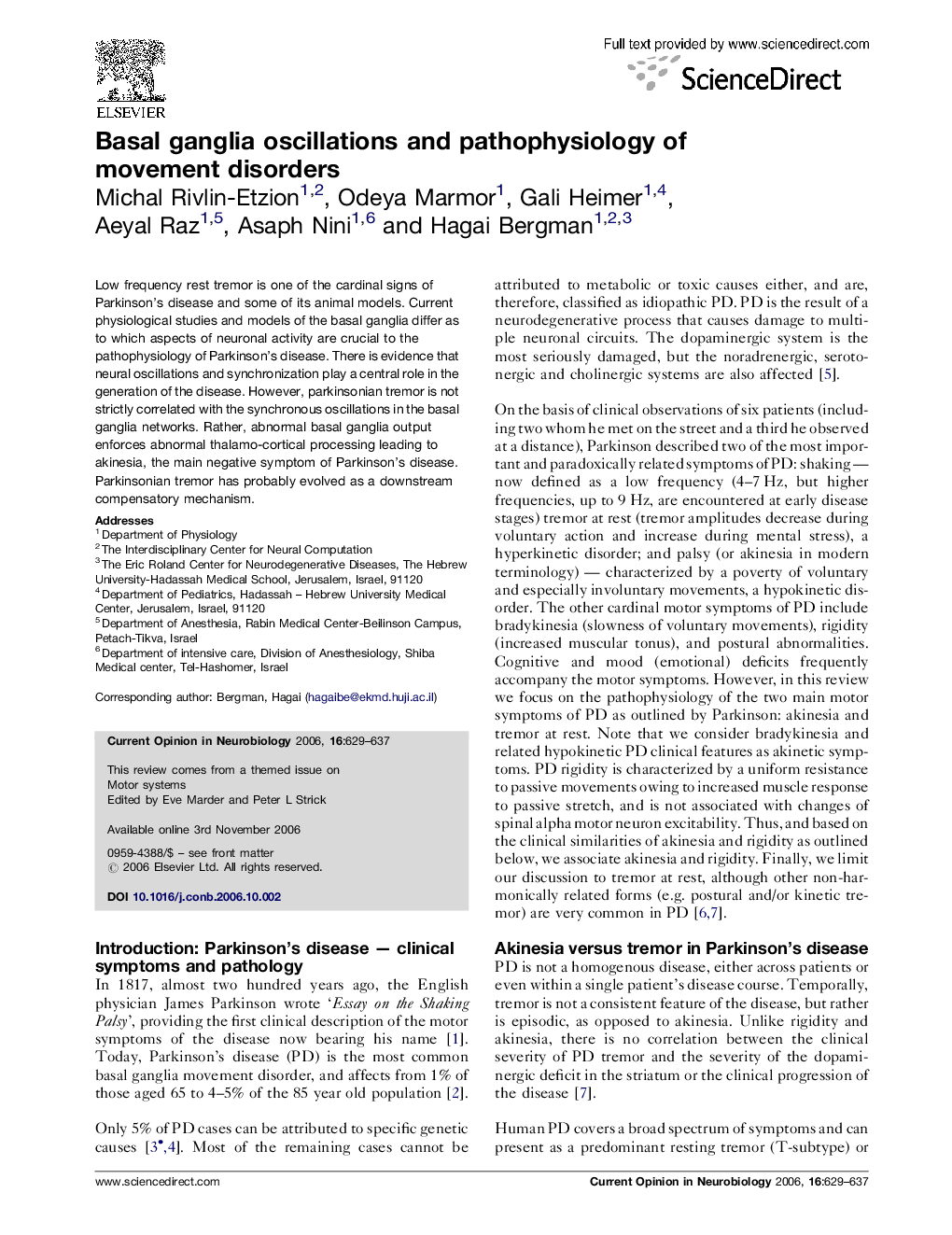| Article ID | Journal | Published Year | Pages | File Type |
|---|---|---|---|---|
| 4334694 | Current Opinion in Neurobiology | 2006 | 9 Pages |
Low frequency rest tremor is one of the cardinal signs of Parkinson's disease and some of its animal models. Current physiological studies and models of the basal ganglia differ as to which aspects of neuronal activity are crucial to the pathophysiology of Parkinson's disease. There is evidence that neural oscillations and synchronization play a central role in the generation of the disease. However, parkinsonian tremor is not strictly correlated with the synchronous oscillations in the basal ganglia networks. Rather, abnormal basal ganglia output enforces abnormal thalamo-cortical processing leading to akinesia, the main negative symptom of Parkinson's disease. Parkinsonian tremor has probably evolved as a downstream compensatory mechanism.
